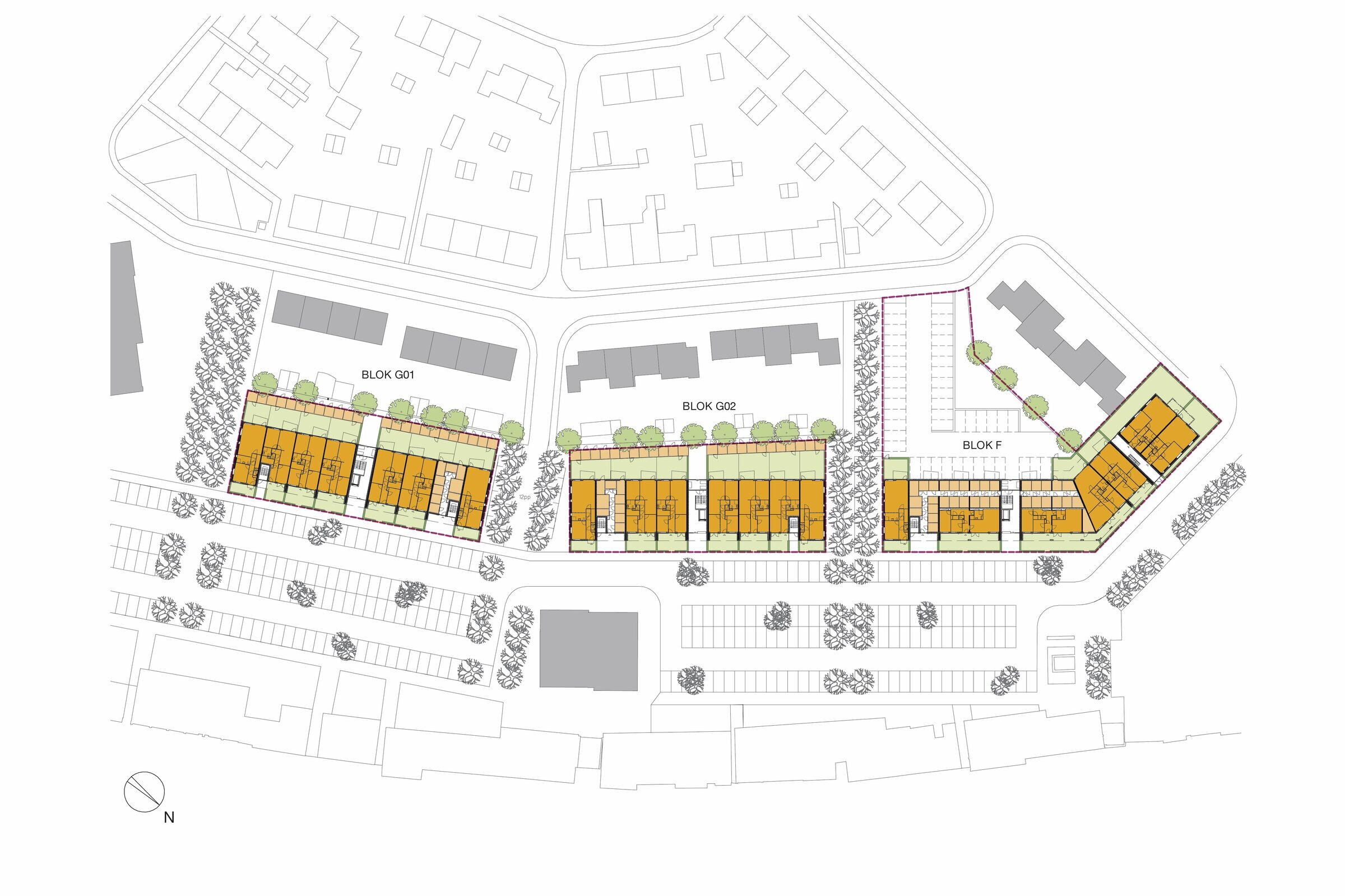Barendrecht, a municipality in the Rotterdam metropolitan area, initially originated as a small village along the historic Voordijk and Middenbaan. After the Second World War, Barendrecht became very popular for commuters, as a result of which the village was expanded with various residential areas that, together with the historic village centre, form the current city centre. To this date, the Middenbaan (a dike) is the heart of Barendrecht with numerous shops, restaurants, and a theatre ‘Het Kruispunt’.
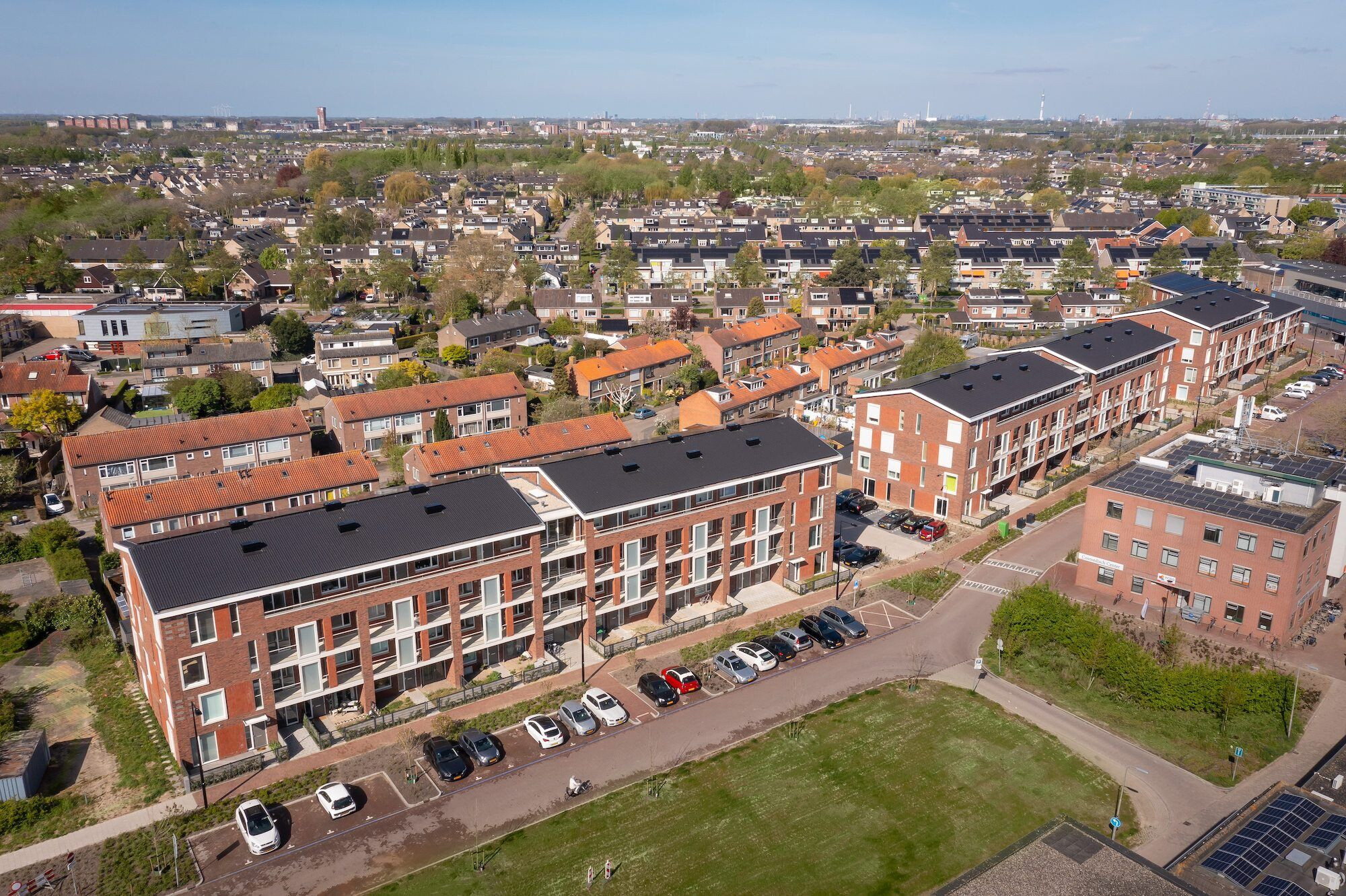
In 2015, the municipality of Barendrecht devised a development plan for the city centre (including standards for design quality) for this shopping area and the surrounding residential neighbourhoods. The new apartments along the Mr. Lohmanstraat are part of this. This development plan provides, among other things, for a substantial expansion of the number of parking spaces at the Achterom (at the bottom of the dike) along a wide public zone between the shopping area and the fifties neighbourhood ‘De Driehoek’.

This early post-war neighbourhood, by architect and urban planner Willem Wissing, is a small-scale neighbourhood with single-family rowhouses in short blocks with slightly sloping roofs in a separate and open allotment structure, characteristic of that time.

To make the interventions of the centre development plan possible, several single-family homes belonging to social housing association Patrimonium Barendrecht had to be demolished. The new building then had to restore the urban structure of the neighbourhood and at the same time form a new facade along the parking zone. It was also important that this new public space would not evoke the anonymous atmosphere of a utilitarian rear facade but would be a fully-fledged and attractive entrance to the central area.
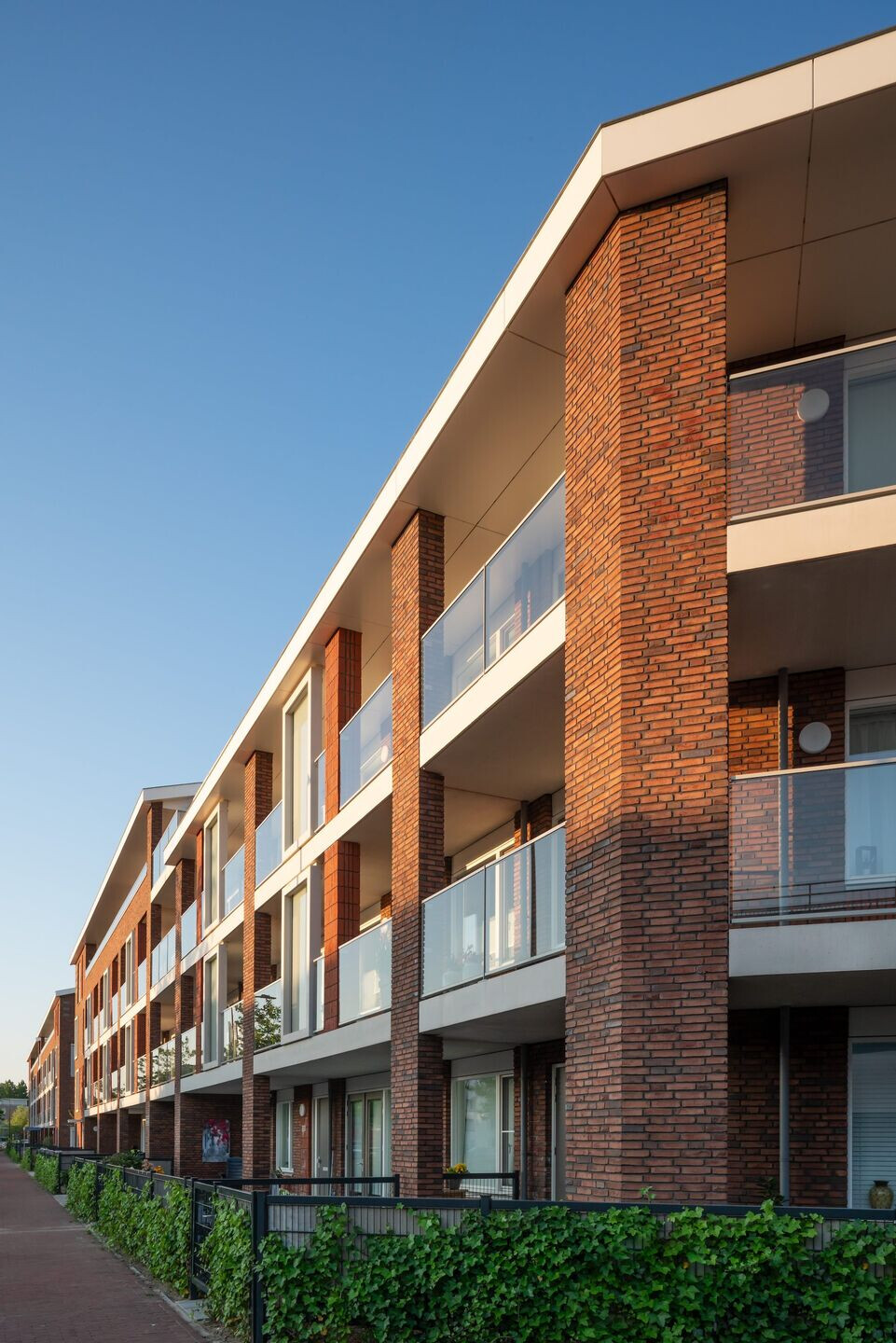
Our plan was commissioned by Patrimonium Barendrecht consisting of three apartment buildings with a total of 93 social housing rental apartments. Because of the targeted elderly residents, a building typology with accessible public galleries was needed. It goes without saying that these external corridors would be adjacent to the parking zone, the least attractive side in terms of view and sunlight. In the design we wanted to avoid that the large scale façade of almost 300 meters would create a anonymous and monotonous image along the street side (parking zone). This was a guiding principle for the overall design.
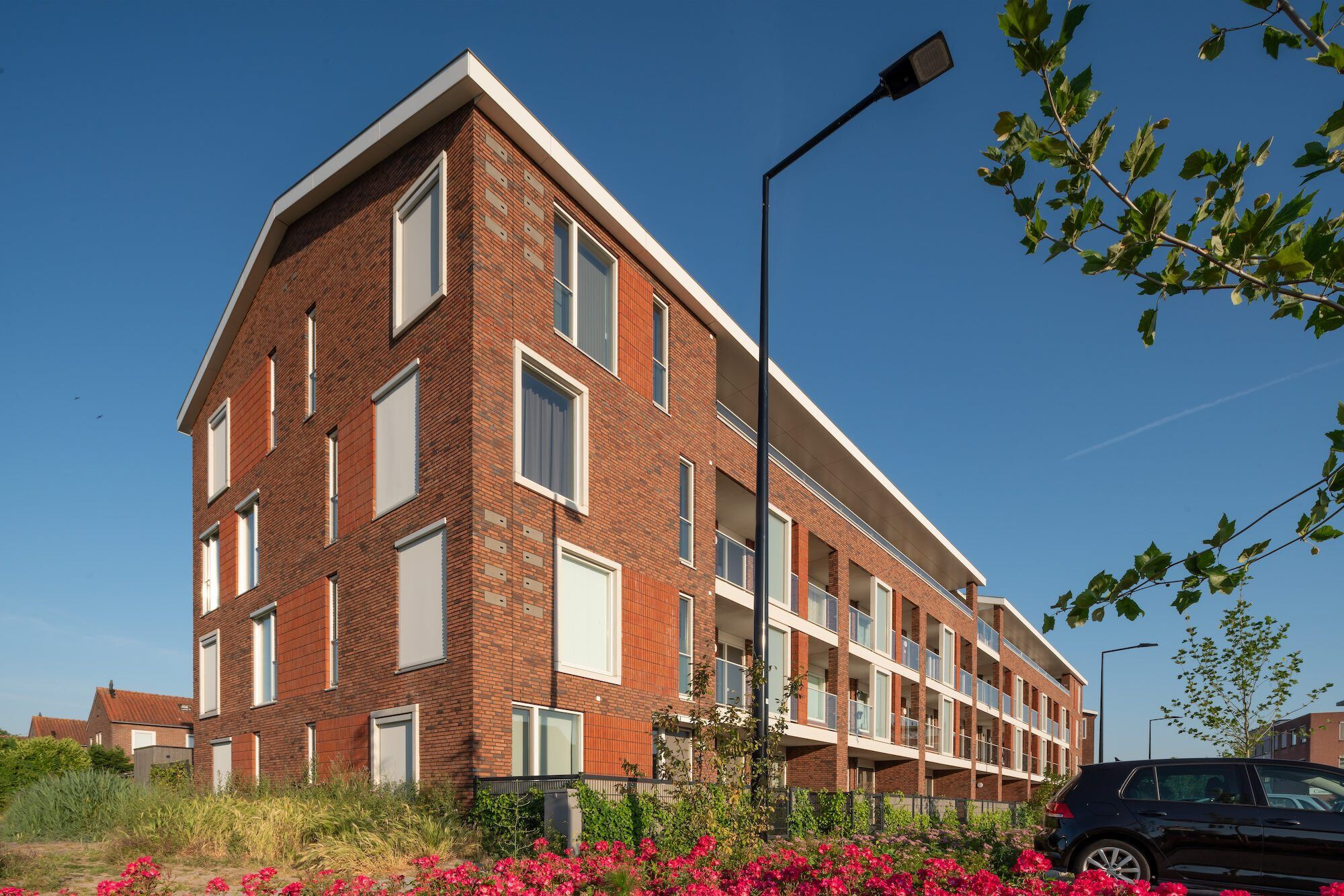
By positioning the main stairwell centrally, each block is visually divided into smaller building compartments therefore limiting the number of front doors along the public gallery. In use, anonymity is therefore no longer an issue because every home only has a few neighbours. By giving the corner apartments a view of the street, the galleries are further limited in length. The horizontal lines of the corridors are interrupted by vertical brick piers, interspersed with smaller masonry columns in a vertical brickwork bond, and large concrete frames with frosted glass opposite each front door.

The masonry consists of high-quality waterstruck bricks and all the prefab concrete is executed with white cement. The houses are generously sized, with an open façade containing a lot of glass with large private balconies oriented southwest.
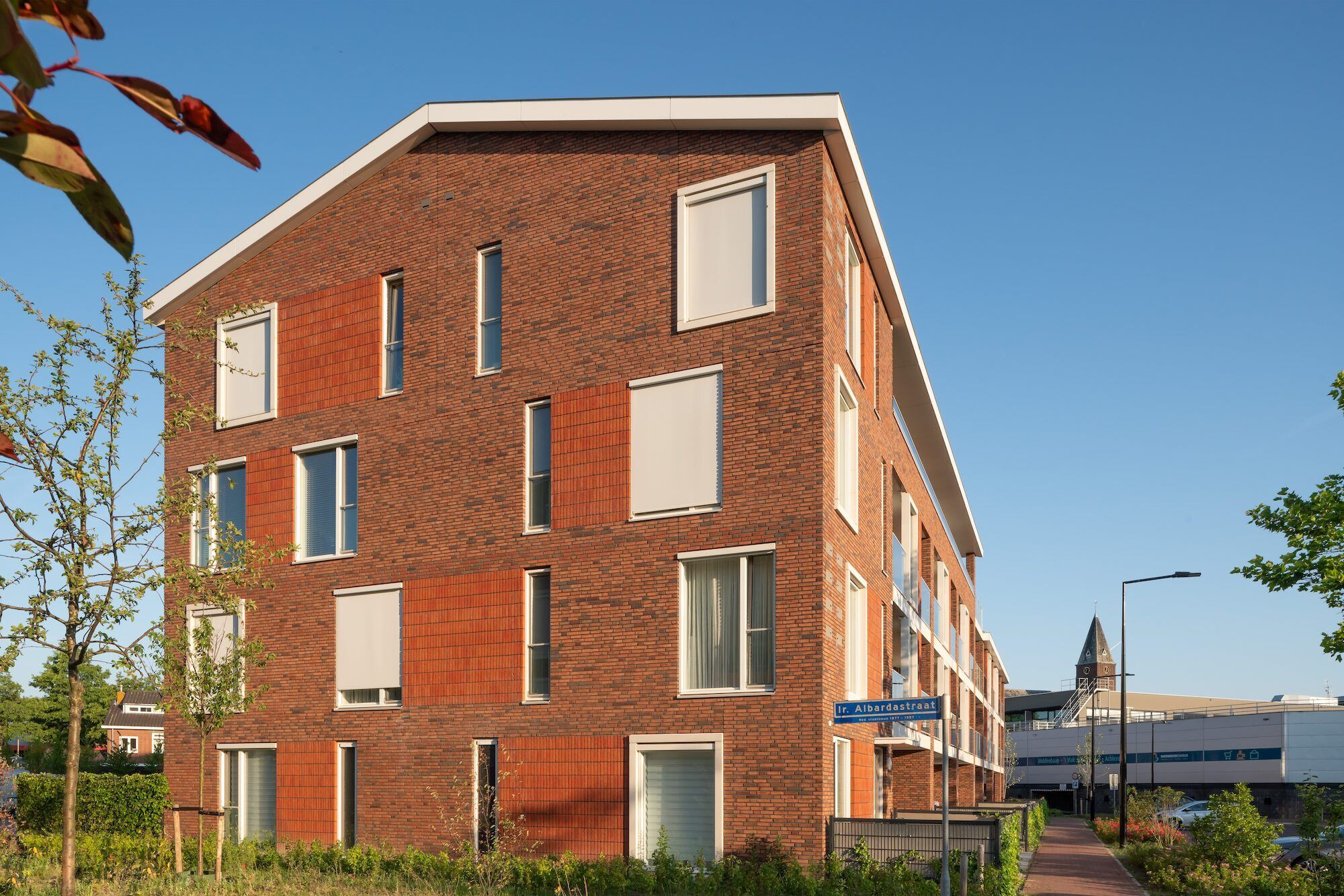
The new building is partly four-layer and three-layer, matching the scale of the existing 1950s semidetached houses. The apartments on the ground floor are a unique typology that are directly accessible from the street. The top floor of the four-storey blocks is accented by a masonry parapet that makes the building as a whole appear lower. The floors in between are articulated with a separate rhythm, fitting in the scale of the surrounding village. The application of a sloping tiled roof is essential and makes the neighbourhood ‘De Driehoek’ recognizable as a whole again.

Materials Used:
Straatman B.V.: Glass balustrades
Vebo Beton & Staal: Concrete frame elements
Wienerberger B.V.: Ceramic bricks
Triple Solar: PVT heat pump panels
